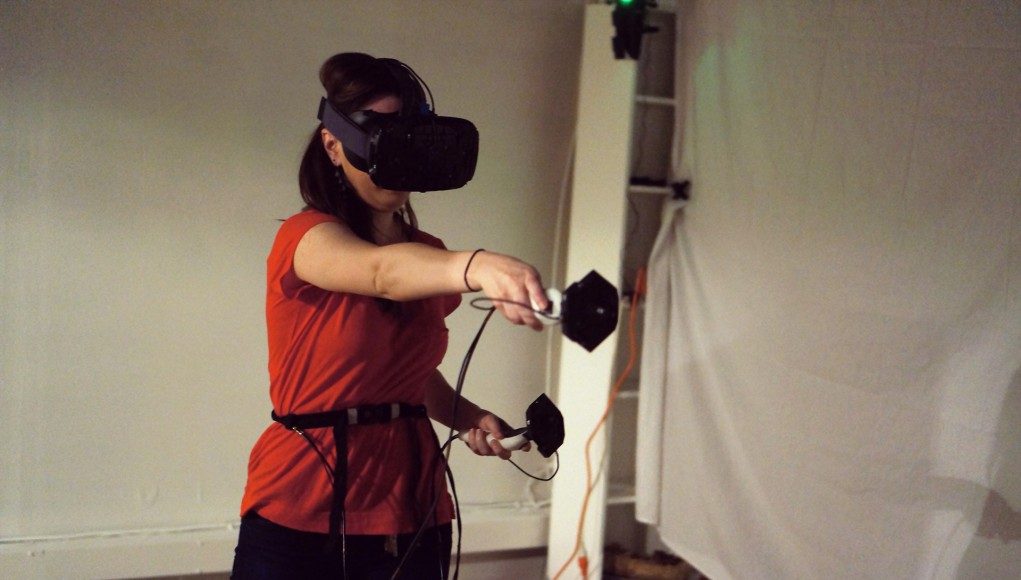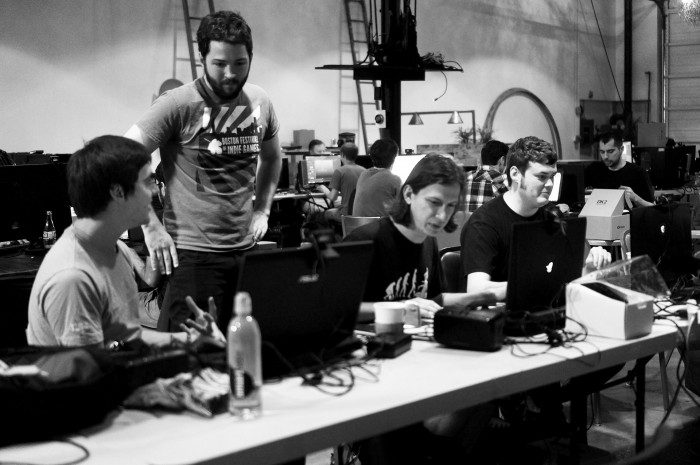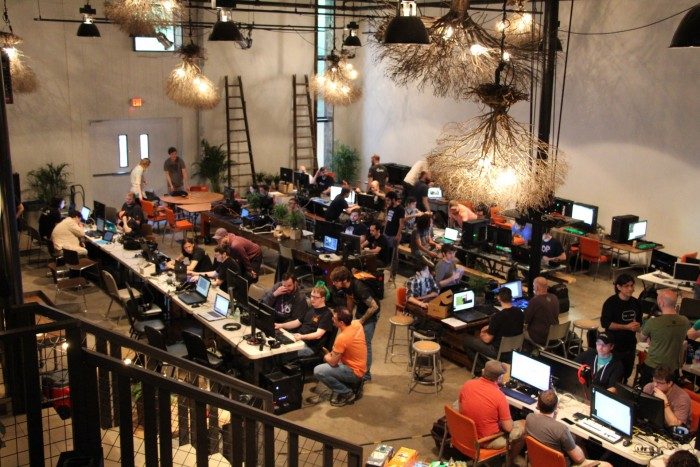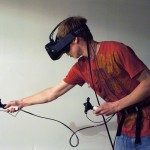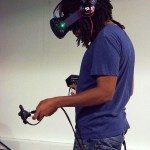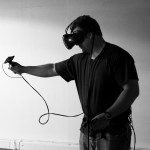Last weekend, Owlchemy Labs and VR Austin hosted an event in conjunction with Valve, HTC, Nvidia, Epic, and Unity, that gave VR developers a chance to created rapidly prototyped VR experiences for the brand new HTC Vive headset that works with Valve’s SteamVR platform to enable a ‘room-scale’ 15×15 foot play space.
While SteamVR and the HTC Vive have been applauded for the 15×15 foot space in which they allow players to move, what happens when developers want to tell stories that need to go beyond the walls physically surrounding the user? That question is still up in the air as developers begin to experiment with the opportunities and restrictions afforded by the new platform. At the Austin Room-scale VR Jam hosted by Owlchemy Labs and VR Austin, several interesting ideas were explored to virtually extend locomotion beyond the room-scale player space. Austin-based VR developer Aaron Lemke fills us in.
 Aaron a musician and the founder of VR indie dev studio Unello Design. Mostly interested in exploring the experiential side of VR, he has created nine experiences so far: Eden River, Lunadroid 237, Waking Man, Fire Breather, Eden River Mobile, Eden River HD, Opera Nova, Nebuland, and Zen Zone. Currently he continues to develop relaxing and meditative experiences for Samsung’s Gear VR, the HTC Vive, and Oculus Rift CV1, as well as exploring medical applications for VR.
Aaron a musician and the founder of VR indie dev studio Unello Design. Mostly interested in exploring the experiential side of VR, he has created nine experiences so far: Eden River, Lunadroid 237, Waking Man, Fire Breather, Eden River Mobile, Eden River HD, Opera Nova, Nebuland, and Zen Zone. Currently he continues to develop relaxing and meditative experiences for Samsung’s Gear VR, the HTC Vive, and Oculus Rift CV1, as well as exploring medical applications for VR.
The Austin Room Scale VR Jam with the HTC Vive was an incredible experience. I wish my 12 year old self could see what his 24 year old self got to spend the whole weekend doing. ‘Room-scale’ is a new paradigm for VR (seems like every few months or so we get a new one). This was a good opportunity to stretch our minds around what designing for room-scale entails. It was a great learning experience for everyone. Some of the most interesting discoveries related to re-contextualizing the room space to make it feel larger than it actually was.
For instance the Slice VR team made a game called Colonel Apple Pie Jones where you were in a room with an elevator in the corner. Every once in a while you would have to walk into the elevator and go up a floor. This created the illusion that you were really traveling into different spaces.
Another team built a game based on a jet pack that you could use to fly around a large world. You could land, then get out and walk around wherever you landed, then load up again and go explore someplace else.
My team consisted of Aaron Angert, Matt Scott and myself. We created a 3D maze game called Cyber Snake, akin to a 3D version of Operation. The goal was to create an experience that required the player to walk around the space, taking advantage of the room scale positional tracking, but at the same time required very precise hand movements using the SteamVR/Vive controller.
One of the techniques we explored for ‘expanding the room space was dynamically loading new mazes behind the player once they had solved the previous maze. By constantly morphing the room it created a feeling of being lost in the world and forgetting where you were in physical space. By the end of the experience, you really felt like you’d travelled some distance.
Some people showed up to the jam with teams already formed. Others joined up during the event. We were able to work on our creations most of the day on Saturday and Sunday, while Sunday evening was reserved for us to all try out each other’s work. There were snacks out the whole time and pizza and beer were provided on Sunday.
Valve brought three HTC Vive systems for us to test our games on. At first there was a sign-up sheet for testing, but eventually they just let us come up whenever we wanted with our game on a USB key to test it out. It was pretty rad, there were a few people from Valve there to watch over the systems and make sure everything was working, (including the guys who wrote the SteamVR integration for Unity and Unreal, which was great for troubleshooting).
For the most part they stayed out of the way and let us test out whatever we wanted. Since there were three Vives running at once, there was never more than a 5 minute wait to test your game. I was really impressed with home much freedom they gave us, and how easy it was to get a game up and running with SteamVR, controllers and all.
On the final night there was a party where all the demos were opened up to the public to try. There was no judging or winner at the jam; for me the reward was getting to play around with what might be the best consumer VR system in the world.
Photos courtesy Lauren Ellis and VR Austin

